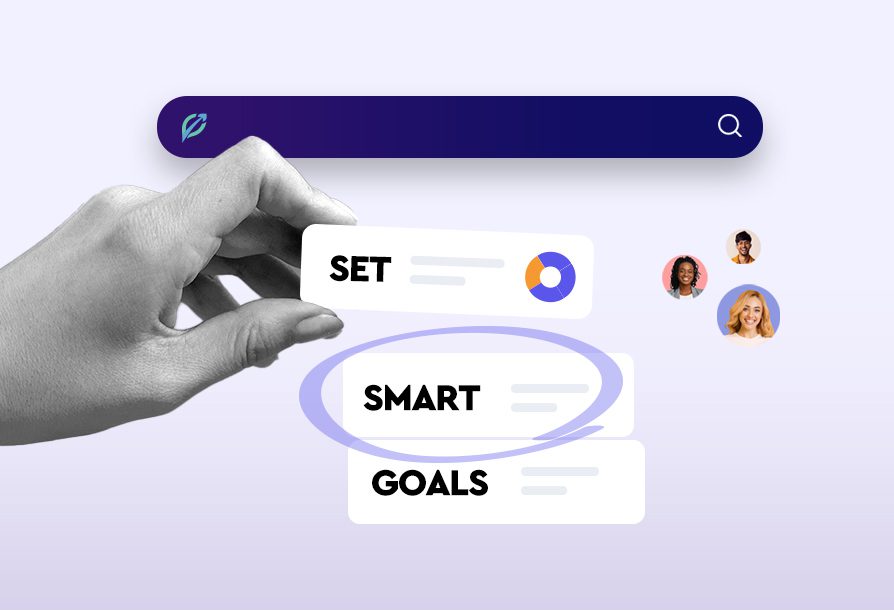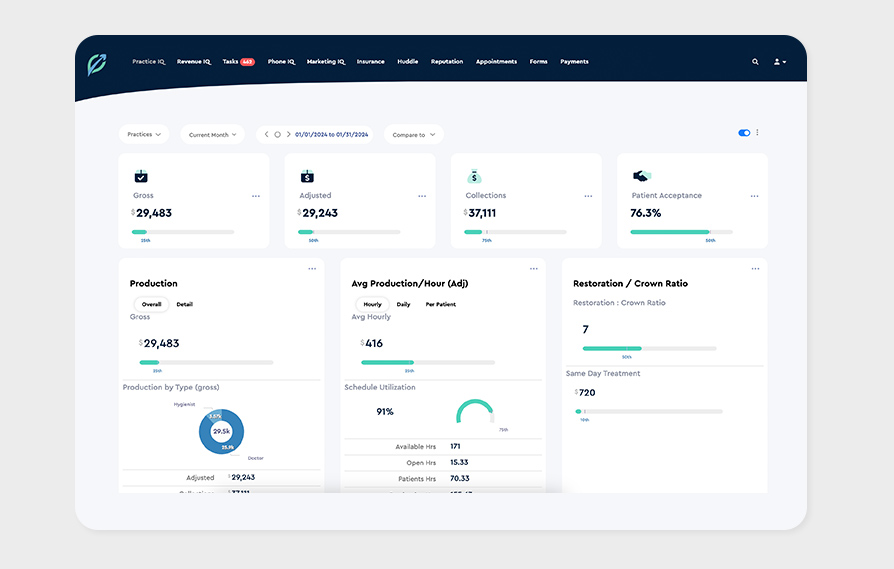SMART Goals, Analytics, and Real-Time KPIs

Setting goals is one thing, but understanding how to make them SMART is a game-changer for dental practices seeking meaningful growth.
In this blog post, we’ll delve into the world of SMART goals and unravel the key principles behind setting them for your dental practice. We’ll break down each element of the SMART framework, providing practical tips and real-world examples to demystify the process.
But the journey doesn’t stop at setting goals. We’ll shed light on the crucial aspect of measuring and evaluating progress. Discover why keeping a finger on the pulse of your practice’s performance is vital and how it empowers you to make informed decisions, identify areas for improvement, and celebrate the wins that drive your practice forward.
Keep reading to learn how to set goals for your practice that are not just aspirations but actionable plans with a purpose.
Breaking Down the SMART Framework
- Specific: Setting specific goals involves clearly defining what you want to achieve. When a goal is specific, it leaves no room for ambiguity. It paints a clear picture of what success looks like, eliminating any confusion among team members about the intended outcome.
- Measurable: Measuring progress is crucial for tracking success. Establish tangible metrics that allow you to gauge your achievements. For instance, if the goal is to “Increase appointment bookings,” quantify it by aiming for a specific percentage increase within a defined timeframe.
- Attainable: Goals should be realistic and achievable. Consider the current capabilities and resources of your dental practice. Rather than setting an unrealistic target like doubling patient numbers overnight, focus on gradual and feasible growth.
- Relevant: Align goals with the broader vision of your dental practice. Goals that align with the broader vision are not just relevant but strategically aligned. This means that achieving these goals propels your practice in the desired direction.
- Timely: Setting a timeline adds a sense of urgency and structure. Team members are not left navigating an open-ended journey; instead, they have a well-defined path with clear expectations and deadlines.
Here is an example illustrating the transformation from a general goal to a SMART goal:
Original Goal:
Increase Treatment Acceptance
SMART Goal:
Attain a 25% increase in treatment acceptance rates over the next three months by providing comprehensive patient education during consultations and implementing follow-up communication.
By transforming general objectives into SMART goals, your dental practice gains not only clarity and direction but also a roadmap for success.
Harnessing Analytics for Goal Measurement
Setting clear objectives is just the beginning. The real magic happens when you leverage analytics and real-time Key Performance Indicators (KPIs) to measure and track your goals effectively. These tools are indispensable for the success of your dental practice and how they transform aspirations into tangible, data-driven achievements
Informed Decision-Making:
Regularly measuring your goals provides a wealth of data. This data, when analyzed, equips you with insights to make informed decisions. Whether it’s adjusting strategies, reallocating resources, or identifying areas for improvement, analytics become your compass.
Identifying Successes and Challenges:
Metrics and KPIs act as a mirror, reflecting both successes and challenges. Celebrating achievements becomes more meaningful when backed by quantifiable data. Simultaneously, detecting areas that need attention becomes efficient, allowing for prompt corrective action.
Strategic Planning:
Analytics serve as the foundation for strategic planning. By understanding what works and what doesn’t, you can refine your approach, allocate resources wisely, and align your strategies with the overarching goals of your dental practice.

Real-Time KPIs: A Game-Changer
While regular reports have their place, real-time KPIs add an extra layer of agility to your goal-tracking arsenal. Imagine having a dashboard that offers an up-to-the-minute view of your practice metrics. Here’s how real-time KPIs can elevate your dental practice management:
Quick Identification of Issues:
Daily or weekly reports are insightful, but real-time KPIs allow for swift issue identification. If, for instance, your daily production rate is lower than expected, you can intervene promptly, sending out appointment reminders or adjusting scheduling strategies.
Agile Decision-Making:
Real-time insights empower your team to make agile decisions. Whether it’s adjusting the daily agenda or addressing sudden cancellations, having the latest data at your fingertips enhances your ability to navigate challenges effectively.
Enhanced Team Alignment:
Incorporating real-time KPIs into your daily routine fosters team alignment. During daily huddles, having a live dashboard encourages collaborative discussions around current goals, ensuring everyone is on the same page and working towards shared objectives.
How Practice by Numbers Can Make a Difference
The integration of analytics into your practice management provides a treasure trove of insights. Whether it’s identifying successes, pinpointing challenges, or informing strategic decisions, analytics act as a guiding light. Investing in a robust analytics software can elevate your understanding of your practice’s health, empowering you to make informed and data-driven choices.
Ready to get started?
To learn more about prioritizing your patients experience, reach out to us for a demo today.



